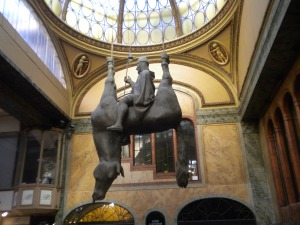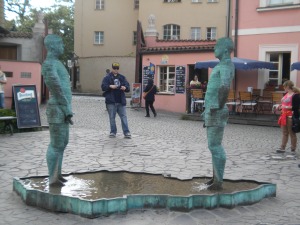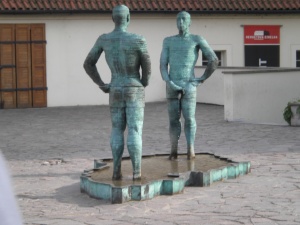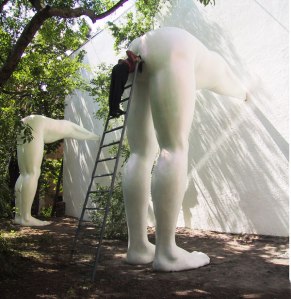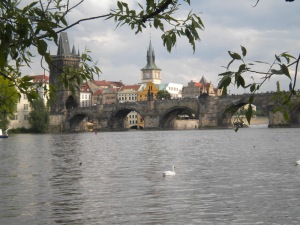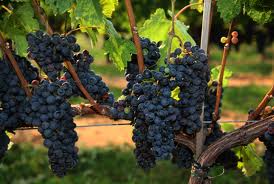
Mist in Kiraly
By royal decree the world’s first vineyard classification system was introduced here in 1730 with vineyards classified as first-growth, second-growth and third growth depending on the soil, exposure and potential to develop Botrytis Cineria. This was completed in 1772.
To conform to European Union norms since 2011, Hungarian wines are now grouped as “protected designation of origin”, “protected geographical designation of origin” and “without geographical designation of origin” categories.
A visit to Hungary will surprise the most adventurous gourmand and wine connoisseur. Arriving in Budapest, one is seduced by its beauty and slightly wistful elegance. The city spreads along the two shores of the mighty Danube’s silver-blue ribbon, meandering between Buda and Pest. Once called the “Paris of the East” events of the recent past did not entirely manage to suppress its raffish energy. The wide boulevards, exquisitely restored buildings and stylish restaurants leaves one with a sense that it is slowly emerging from a chrysalis and will soon display its full splendour again. Visitors flock to its famous thermal spas and the scenic surrounding country side which includes the ancient wine region of Tokaj-Hegyalja, best known for its ambrosial Tokaji Aszú, a sweet botrytised dessert wine.
FOOD AND CULTURE
For centuries eastern European countries have been pawns in the hands of larger empires: Roman, Austro-Hungarian, Ottoman and Russian. Countless armies have rampaged back and forth across the plains of Hungary, Poland, Slovakia and the Czech Republic with conquerors leaving their imprint on the wines, food and culture. Today Hungary is the place to be for good eating and drinking but remains mostly under-appreciated and unknown except for the awareness of paprika infused goulash-style soups or stews. Hungerians, or Magyars as they are known, originate from nomadic tribal horseman who arose in Central Russia. They are fiercely proud, with great vitality and an appetite for good living.
Traditionally meals are a ritual infused with love and great flavours. Local chefs and country cooks have preserved time honoured cooking methods and traditional dishes still forms the back bone of the cuisine. Heritage breeds of cattle, pigs and sheep are being resurrected and good fresh produce abound. A little known fact is that Hungary is the biggest Foie Gras producer in the world and much of it is exported to France. It is traditionally simply prepared to melt in the mouth perfection – often served with fruit. Truffles have also re-emerged from the mid 1990’s and are of similar quality as those found in France and Italy.
There is a saying in Hungary that “Good coffee should be black like the devil, hot as hell and sweet like a kiss.” Their coffee is sensational! The coffee culture came to Budapest during the 150 year long Turkish rule and the era of Budapest’s grand old coffee houses defined social life from the late eighteen hundreds until 1940 with communism and socialism eventually erasing what was left. Many books, plays and journals were penned and edited at the small marble tables and although times have changed cafés still play an important role in the city’s social life. To experience the welcoming atmosphere of a by-gone era, pay a visit to the art nouveau Café New York or Centrál Kávéház, a coffee house which first opened in 1887. The building was nationalized in 1949 but beautifully restored now with a classy pre-war look in shades of soft green, orange, brass and gold. One can imagine the famous Hungarian writer and gourmand, Gyula Krùdy penning one of his many novels or articles at one of the tables, capturing a scene, a dinner or a dish with poetic prose. He writings perfectly reflect the romance of early 20th-century Budapest and the magic of Hungarian food – he is sometimes refered to as “a Magyar-writing Homer”.
One can eat a splendid two or three course lunch at the many étkezde. These are small eateries with reasonably priced menus changing daily. They typically serve soups, stews, fried, stuffed or roasted meats, fried cheese, pasta as well as a couple of desserts. To soak up local colour and cuisine visit Ráday Etkezde or Kádár étkezde. Despite dishes often being heavily spiced with paprika, Hungarian food is not hot – hot paprika is used as a condiment at table – even at breakfast.

Tokaj Classic 6 Puttonyos Aszu
WINES
TOKAJ is the name of the town situated at the confluence of the Tisza and the Bodrog rivers, which gives its name to the region, also known as TOKAJ-HEGYALJA. TOKAJI is the adjective used to describe the wine as in “Tokaji aszú”. TOKAY is a different, but obsolete, spelling.
In a wine world dominated by Chardonnay, Cabernet Sauvignon and a few other varieties of French origin, it captures the imagination that Hungary has the vinous treasure of 140 indigenous wine grape varieties growing in 22 wine regions. White wines are often made from Ezerjó, which produces light, fresh wines. Furmint and Hárslevelu are the key components in Tokaji wines. The most famous red wine is Egri Bikavér, or “Bull’s Blood of Eger”, which comes from the Eger wine region in the north. It is always a blend anchored by the ancient Kadarka variety . Most of these varieties are completely unknown to wine consumers the world over despite their potential for producing quality wines.
In the north east of the country lies the famous fine wine region, Tokaj-Hegyalja, producing the renowned Tokaji Aszú (meaning dessicated in Hungerian). Reportedly the first botrytized sweet wines were made here in the 1600’s from these shriveled berries and the first might well have been an accident due to people delaying harvest as a result of hiding away from a threatening invasion. Thus when the Dutch landed in the Cape this glowing, amber liquid was already savoured at the tables of Europe’s crowned heads even though our own Constantia wines reach similar status later. Recognising its quality, 13% of the region was delimited into first-, second- and third growths in the eighteenth century by royal decree. Two world wars and nationalization, focused on quantity and not quality, took its toll. After the fall of the Iron Curtain, foreign investors such as Vega Sicilia, British wine writer Hugh Johnson and others, helped recovery.
In 1995 The Tokaj Renaissance Association was founded to protect and promote the quality of their great growth vineyards and now consists of 20 wineries such as Szepsy, Oremus, Tokaj Classic, Dobogo, Alana and others. The area was declared a UNESCO World Heritage Site in 2002. The passion and dedication of the new generation of winemakers is not only breathing new life into the centuries old tradition, but also pushing boundries to accommodate modern consumers. A range of wine styles, from bone-dry, through late-harvest, to the ambrosial Essencia as well as Tokaji Aszú at 3, 4, 5 or 6 Puttonyos is produced. Tokaji Szamorodni – which means ‘as grown’ – is produced in years when too few berries with noble rot make berry selection uneconomical and the bunches are processed as harvested. Depending on the proportion of Aszú berries, these wines will be dry or sweet.

Vineyard Sites
The vineyards are situated on the slopes of the Carpathain Mountains facing the flood plain and confluence of the Bodrog and Tisza rivers. They are planted on a series of small extinct volcanoes with resultant complex soils, which together with the aspect and climate, conspire to form a very special terroir. Autumn mists creep up from the plain and create ideal conditions for the little fungus, Botrytis Cinerea (noble rot) to infect the grapes. The juice is concentrated and sugar levels intensified by the unattractive looking fungus. The infected grapes are picked individually by hand and one person seldom picks more than about 12 kilogram a day, yielding approximately 800 to 1 000 bottles per hectare in a good year. This almost perverse selectivity is what makes both Tokaji and Sauterne the great wines they are.

The most important variety is the indigenous grape Furmint, with its build-to-last acidity. It is a late ripener and often hangs well into the second half of October with harvest sometimes extending into December. It is prone to botrytis with an ability to develop high sugars while preserving high acidity and provides the cornerstone for sweet wine production while also making distinctive and characterful dry wines. The floral Hárslevelü plays a supporting role with the more aromatic and late-ripening Muscat blanc á petit grain (Yellow Muscatel) contributing discretionary punch. Varieties such as Zéta, Kövérszolo and Kabar are also in production.
The wine making process is rather complicated with the Aszú berries put into a wooden hod called a putton for six to eight days this yields a highly concentrated juice, called Tokaji Essencia, an elixir prized by Tsars, Kings and Connoisseurs. Each putton holds 25 kilograms which is kneaded into a paste once the precious Essencia has been removed. This is then added to a 140 liter cask, or gönc, of dry base wine. The sweetness of the wine depends on the number of puttonyos added to the base wine, hence the ranking seen on labels: 3 puttonyos will have at least 60 grams residual sugar per liter with 4, 5 and 6 puttonyos getting progressively sweeter at 90, 120 and 150 gms/l respectively. Tokaji Aszú Essencia will have at least 180 grams per liter. This must not be confused with the rare Tokaji Essencia, which painstakingly drips out solely under the berries’ own weight and could have in excess of 800 gms/l. Fermentation of this nectar could take years to complete and might only attain 2 or 3% alcohol by volume – so technically not a wine but a restorative quintessence of the grape. The sweetness might sound excessive but the rapier-like acidity and high extract in these wines give them the back-bone and the tangy depth which defines Tokaji and makes it almost immortal.
Some of the new generation Tokajis are made more reductively (excluding air from the winemaking) which gives fresh, bright fruit although even these settle into autumnal richness with time. Tokaji Aszú wines are not necessarily about prisitine freshness, but have a deeper umami character. Descriptors such as apricots, honey, pears, quince, raisins, figs, orange marmalade, dried fruit and butterscotch are a futile attempt at pinning down the genie. Age adds the dimension of tea-leaves, madeira and tobacco with 18th and 19th Century bottles highly sought after collector’s items. After tasting the 1811, Michael Broadbent experienced British wine writer, gave it 6 out of five stars and remarked : “It is the only wine I have ever tasted which did not have a “finish”. It just went on and on.”
Mysterious magic happens in the subterranean, mold-covered cellar system, carved in the soft volcanic rock, where low temperature and high humidity encourage the unique microflora, Cellare Cladosporium, to grow. Barrels from the nearby Zemplén hills, with its tradition of cooperage are often used, adding another element of local identity. If a full barrel is put next to a clean wall it will soon be covered by white mould, which will turn grey with time and eventually black. This symbiotic relationship encourages the formation of aldehydes which in turn gives the wine a silky patina of deliciousness.
WINERIES

Young Szepsy with rock samples from the vineyards
The village of Mád is surrounded by some of the best vineyards such as Szent Tamás (Saint Thomas), Nyúlászó (Hare-Hunter) and Király (King’s vineyard). It is the base of István Szepsy, who is one of the most famous producers tracing his heritage in the region back to the 16th century. The dazzling quality of his wines, have brought collectors and success to his door and he has played an important role in the renaissance of the region. With his son, István Jr. they also make some outstanding dry wines.

Bottles maturing in the Dobogo Cellar
Dobogó, which lies in the village of Tokaj, literally means “clippity-clop,” the sound of the horsedrawn carts on cobblestones as they return from the vineyards. As I walked through their cellar with winemaker Attila Domokos, the back-lit bottles – each vintage maturing in its own alcove – cast a golden glow over the gloomy interior giving one a sense of timeless alchemy at work. Here I was privileged to taste their small range of outstanding wines including the somewhat modern ‘Mylitta’ which had 8 months in French and Hungerian oak. It is luscious and fleshy with tones of peaches and marmalade lifted by terrific acidity. I also tasted my first Essencia which made it clear that words cannot capture its spirit. It shoots through your senses in a sun-burst of flavour and lingers down the throat like honey-coated gold. At the end of the tasting my generous host proceeded to pour half a cup of Essencia over some blue cheese he had made and matured in Tokaji for 6 months! The permeating, deep fragrance of red roses warmed in the morning sun mingled with the cool, earthy-creaminess of the blue cheese is a taste memory never to be forgotten.

Blue Cheese dressed with Essencia
Oremus, in Tolcsva, is owned by the famous Spanish winery,Vega Secilia and has an extensive cellar system with some parts dating back to the 1300s and it is stocked with thousands of bottles of aszú, dating back to 1856. Their wines are excellent and the hot foie gras appetizer sauteed in Tokaji aszú and served with dried fruit enjoyed at the French-Hungerian restaurant, Őskaján in Tolcsva, perfected the experience.
A recent visit from Phyllis and András Bruhács brought a taste of Tokaj to the Cape. Their Tokaj Classic Winery is in the village of Mád and is owned by a partnership of András and two fellow musicians. Their vineyards are in the premier locations such as Király Hegy (King’s Mountain) and the wines garner many awards and accolades such as winning 6 consecutive gold medals at the International Wine and Spirits Competition in London for their 2000 through 2006 vintages. At a recent tasting, put together by well-respected Steven Spurrier for VINCE Magazine in Budapest, eleven Hungerian wines competed against eleven wines of the world. The “score” was 8 to 3 in favor of Hungary. Tokaj Classic Aszú 6 puttonyos 2006 not only received the nomination for the Hungarian “ National Eleven”, but attained the highest score of all twenty-two participating wines.
HOW TO ENJOY IT
Tokaji Aszú is best consumed at temperatures between 11 and 14 °C. When served warmer the flavours might appear less fresh. A Szamorodni can be served slightly cooler than an Aszú. Once opened, it will keep for several weeks in a refrigerator. Good food matches are fruit salad or fruit tarts, a hot crottin or goat cheese soufflés . An Aszú of 5 puttonyos is perfectly poised to accompany foie gras, but also combines beautifully with cheeses like Stilton and Roquefort. These wines are perfect for desserts with the provision that the sweetness of the wine is equal or greater than that of the dish. Cream based dessert such as crème caramel and crème brulée are classic matches.
Folklore has it that a fairy lost her lover over the rim of a volcano and everywhere her tears fell the land became fertile and vines sprouted, bearing fruit to create this legendary liquid to lift the spirits and benefit mankind – it certainly succeeds.

Grape Harvest

Hod 20 – 25kg original puttonyos measure

Almost Ready to Harvest
TASTING NOTES
Tokaj Classic 2005 Late Harvest Alc: 13,5% RS: 102,5gr/l Acidity: 7,1gr/l Euro 6,50
Light yellow/gold colour; clean, fresh apple and citrus aromatics; a touch of honey and fresh forest mushrooms coming through as it gradually gains complexity; medium-bodied, with some minerality and fresh acidity adding backbone and balance to honeyed almond flavours.
Tokaj Classic 2007 3 Puttonyos Aszú Alc: 11,5% RS 86gms/l Acidity 7,9gms/l
Luminous lemony gold; clean, youthful bouquet with touches of orange blossom and clove, slightly grapey; full bodied with good lime marmalade botrytis; a bite of acidity and a clean finish.
Tokaj Classic 2008 5 Puttonyos Aszú Alc: 11% RS 140 gms/l Acidity: 7,9gms/l Euro 19
Clear bright golden amber; clean and complex nose with honeyed peaches and a waxy apple quality, fragrant floral hints. Sweet and full bodied with luscious marmalade richness and a good spine of acidity; appetizing lemon curd tang on the finish.
Tokaj Classic 1999 6 Puttonyos Aszú Alc: 11% RS 180gms/l Acidity: 11,8gms/l Euro 27/GBP75
Deep golden amber with invigorating nose of barley sugar/botrytis, sweet with unctuous dried apricot, toasted walnuts and butterscotch flavours; long and complex with roasted coffee smokiness, tangerine/orange marmalade richness and energizing, focused acidity carrying the lasting finish; very fine and stylish
Tokaj Classic 1998 Aszú-Essencia Alc: 9,5% RS 280gms/l Acidity:10,8 gms/l Euro 62 /GBP135
Less than five hundred bottles made of this finest quality Tokaji; it has a luminous amber glow; with this sugar content it could be a 10 Puttonyos! Viscous, rich and silky sweet with candied peaches, dried apricots and slow-baked quince unfolding slowly; pierced with rapier-sharp acidity on a finish redolent with roasted nuts and ginger biscuits. Sensasional and vivid.

Dobogo Cellar Master – Attila Domokos
Facts and figures:
Wine growing area: 5967 ha
Average property size: 0.57 ha/property
Villages belonging to the region: 28
Tokaj as a proportion of overall Hungarian vineyard area: 6.3%
Number of registered producers: 14 575
Number of wineries: 588
Number of wineries producing the full range of Tokaj wines (aszús, etc.): 48























